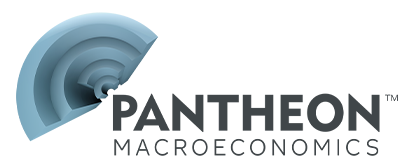US Publications
Below is a list of our US Publications for the last 5 months. If you are looking for reports older than 5 months please email info@pantheonmacro.com, or contact your account rep
Please use the filters on the right to search for a specific date or topic.
- Indicators from Revelio, QuickBooks and Paychex are all essentially useless guides to official payrolls.
- Combining NFIB, Conference Board and regional Fed survey data is the only way to beat the consensus.
- We look for a 75K rise in September private payrolls, above these surveys, due to residual seasonality.
An unreliable guide to growth in services spending.
- Households have delevered over the last five years and many have fixed-rate mortgages with low rates.
- Reducing the funds rate to 3% next year merely would stabilize the effective mortgage rate.
- The weakness in the ISM surveys in Q3 probably is understating the economy’s underlying momentum.
Manufacturing is going nowhere fast.
- The impact of AI on labor demand so far looks small, even for the most at-risk occupations.
- The payroll slowdown this year has far more to do with trade and immigration policies.
- Auto sales are set to weaken, as an EV tax credit expires and tariffs start to push up prices.
Worsening job availability points to a further rise in the unemployment rate.
Drops in the openings-to-unemployment ratio and quits signals slower wage growth ahead.
- The government shutdown will hold up key data releases and likely will drag on economic growth.
- Another 25bp easing from the Fed at its next meeting seems like prudent risk-management.
- The effective tariff rate has now crept up to just 12%, and a further climb is likely in the next few months.
- JOLTS openings ticked up slightly in August, but the underlying trend in labor demand still looks weak.
- Conference Board’s labor market numbers point to stagnant payrolls and higher unemployment.
- The shifting balance in the labor market points to weaker underlying wage growth ahead.
Lower mortgage rates start to lend a hand.
- Reliable surveys point to September payrolls rising at a similarly slow pace as the past couple months.
- Seasonal problems signal a jump in hospitality jobs, but federal policies likely weighed on education jobs.
- The unemployment rate likely crept up, while a calendar quirk probably dampened average earnings.
Turnaround in consumers’ spending built on shaky foundations.
- Spending numbers up to August point to 3% growth in third quarter consumption...
- ...But that pace looks unsustainable, given the myriad headwinds facing households.
- Real after-tax incomes are flatlining, the saving rate is already low, and balance sheets are more fragile.
High prices are holding back sales.
Economy's momentum looks strong in Q3 but unlikely to last.
- We are raising our forecast for Q3 GDP growth to 2.5%, from 2.0%, after August’s advance indicators...
- ...But advance GDP estimates missed the last three major downturns; payrolls are a better gauge.
- Residual seasonality depresses continuing claims in September; the labor market is still weakening.
- The Chicago Fed’s new unemployment tracker relies on several inputs with a poor track records.
- The weights of the inputs are currently unclear; other—useful—indicators have been overlooked too.
- The 20.5% leap in new home sales in August looks implausible to us, and the outlook remains dim.
- The composite PMI is alone in signalling a return to 3% GDP growth in Q3; its margin of error is wide.
- But the signal of slowing producer price inflation is reliable, consistent with a transitory tariff impact.
- We think new home sales dropped back in August, adding to the woes of homebuilders.
GDP LIKELY REGAINED SOME MOMENTUM IN Q3...
- ...BUT CONTINUED CAUTIOUS HIRING WILL SPUR FURTHER EASING
